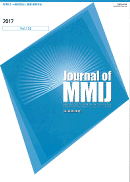
- |<
- <
- 1
- >
- >|
-
– Screening-level Assessment Based on a Simple Dilution Approach –Yuichi IWASAKI, Michihiro MURATA, Tomoya KAWAGUCHI, Shinji MATSUMOTO, ...2022 Volume 138 Issue 3 Pages 28-32
Published: March 31, 2022
Released on J-STAGE: March 29, 2022
JOURNAL OPEN ACCESSFor a total of 80 legacy mines in Japan, by assuming that untreated mine drainages were discharged and that metal loadings from sources other than mine drainage were negligibly small, we estimated seven element concentrations (Cd, Pb, As, Cu, Zn, Fe, and Mn) at water quality monitoring (WQM) river sites closest to individual mines (hereinafter referred to as the closest WQM sites) based on a simple dilution approach. In addition, for zinc as an example, the concentrations at the closest WQM sites were estimated by taking account into estimated zinc loadings from sources other than mine drainage. Results of the former analysis showed that the concentrations of all four elements (Cd, Pb, As, and Zn) at the closest WQM sites were predicted to be below Japanese environmental water quality standards in 50% of the legacy mines analyzed, which is not a small percentage. However, the result of the latter analysis showed that the contributions of treated mine drainages to the total loadings of zinc at the closest WQM sites were less than 50% in approximately 88% of the legacy mines analyzed. This result suggests that metal loadings from sources other than mine drainages at the closest WQM sites are not trivial in many legacy mines. Even if untreated mine drainages were discharged, estimated zinc concentrations in 72% of the WQM sites, where the annual average of measured concentrations of total zinc was below the environmental water quality standard (0.03 mg/L), were still below the standard. Despite a screening-level assessment based on multiple assumptions such as the simple dilution, results of the present study should be valuable for understanding the impact of discharging untreated mine drainages on metal concentrations in rivers receiving those from the legacy mines toward applying the water-quality management that secures the protection of downstream water use.
View full abstractDownload PDF (950K)
- |<
- <
- 1
- >
- >|